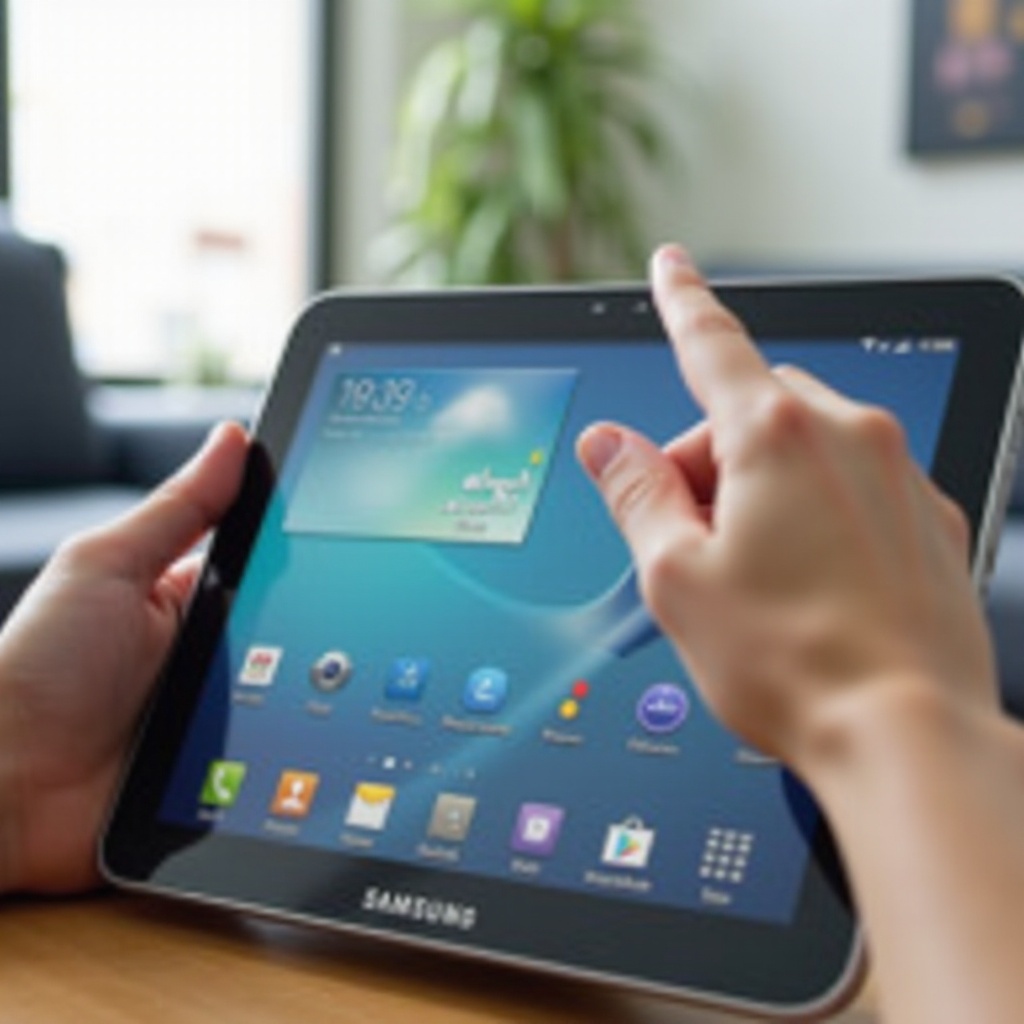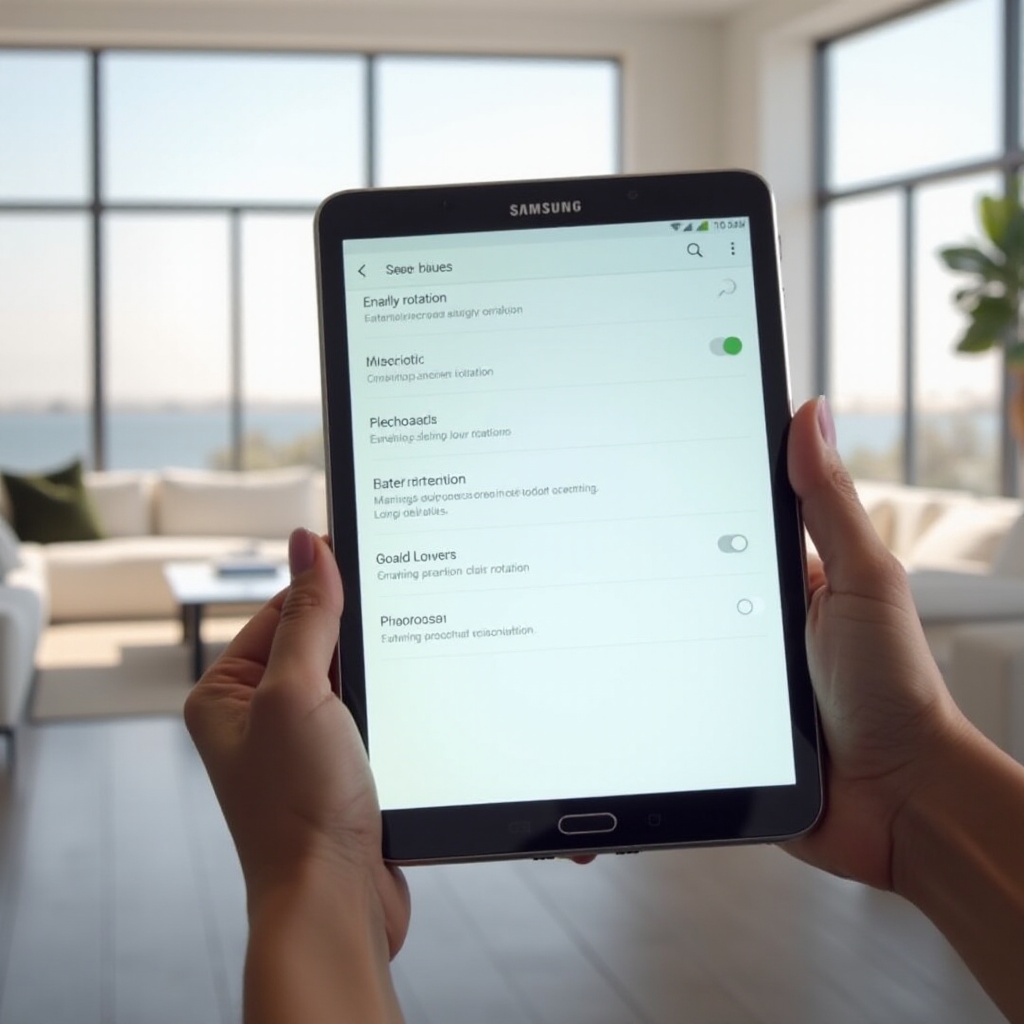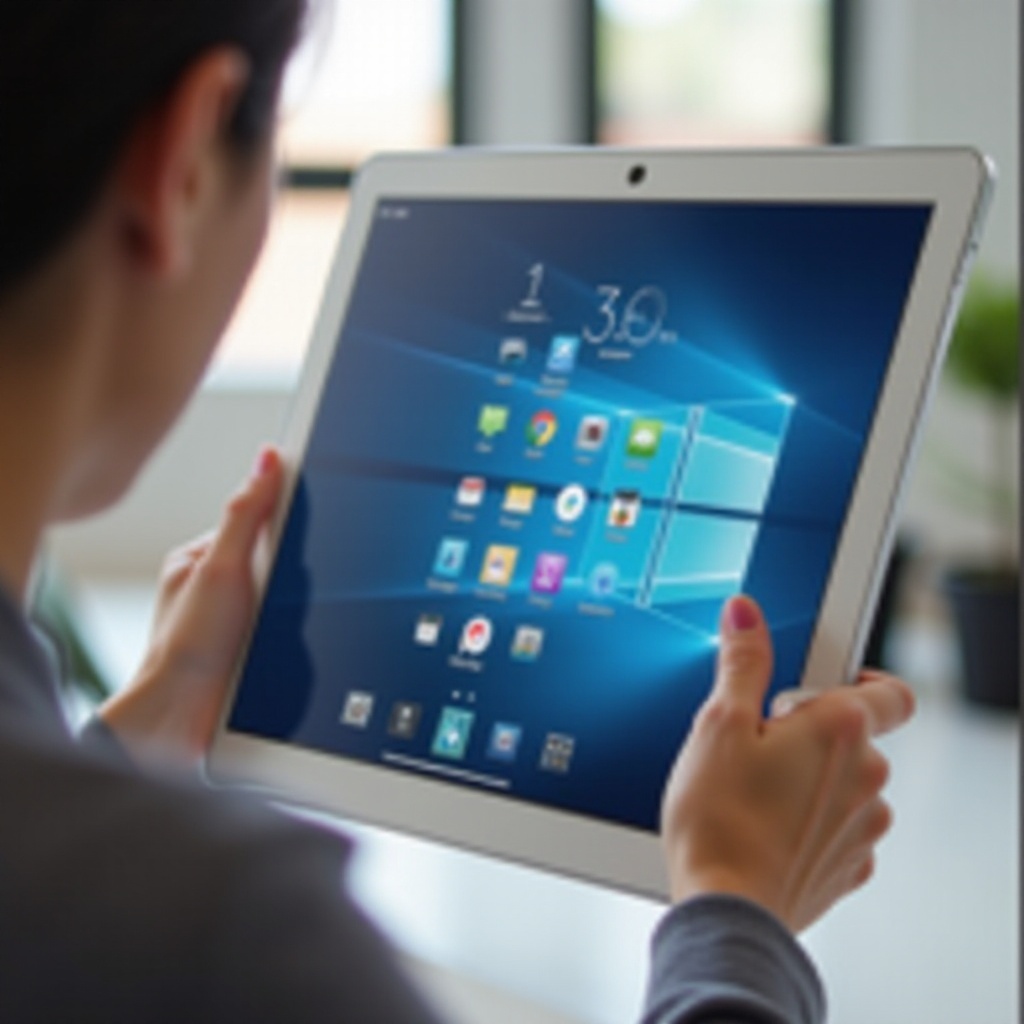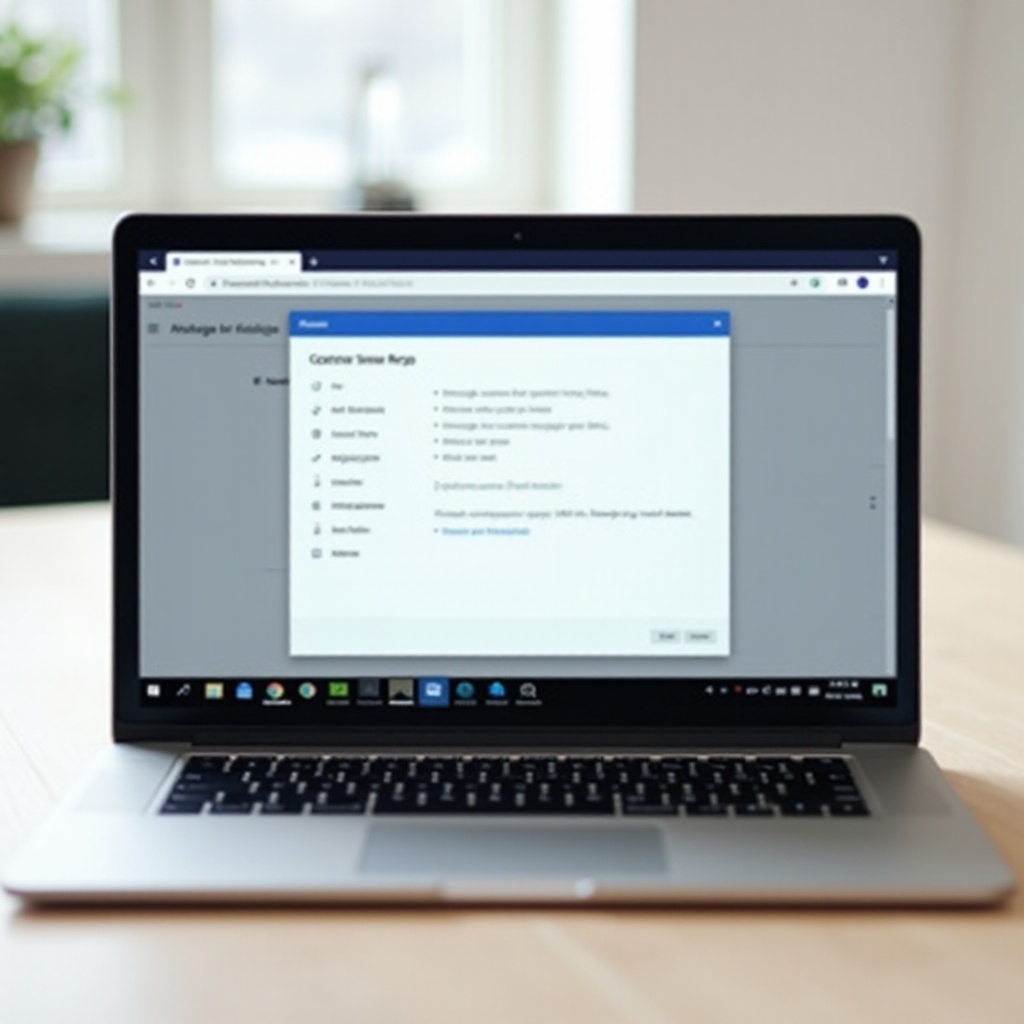Introduction
Seamless screen rotation is a critical aspect of the user experience on modern tablets, and Samsung Galaxy Tablets are no exception. These devices offer intuitive and smooth rotation features to effortlessly shift between portrait and landscape modes. However, mastering screen rotation can sometimes be tricky. Whether you’re experiencing issues with auto-rotate, want to learn how to toggle the feature, or seek to make the most out of your tablet in various orientations, this comprehensive guide is here to assist you.

Understanding Screen Rotation on Samsung Galaxy Tablets
Screen rotation is not just a gimmick; it’s a functionality that significantly enhances your interaction with your tablet in a fluid and natural manner. Samsung Galaxy Tablets manage screen rotation using the device’s built-in sensors, primarily the accelerometer and gyroscope.
- Accelerometer: Detects motion and orientation changes.
- Gyroscope: Measures the rate of rotation and maintains stability.
These sensors work together to detect the device’s position and adjust the screen orientation accordingly. When you switch from holding your tablet upright to laying it flat, or when you turn it sideways, the sensor data informs the operating system to rotate the screen to the corresponding mode. Understanding this principle can help you troubleshoot issues and better utilize the feature.
Smooth transitions between portrait and landscape modes can significantly enhance activities such as reading eBooks, watching movies, or playing games. However, there are occasions when this automatic adjustment may cause frustration. Therefore, knowing how to control this feature is essential.

How to Enable and Disable Auto-Rotate
Controlling auto-rotate is straightforward on Samsung Galaxy Tablets. Here’s a simple step-by-step guide:
- Enabling Auto-Rotate:
- Swipe down from the top of the screen to open the Quick Settings panel.
- Look for the auto-rotate icon, which looks like a phone or tablet with curved arrows around it.
-
If the auto-rotate icon is not highlighted, tap it to enable the function.
-
Disabling Auto-Rotate:
- Swipe down to access the Quick Settings panel.
- Tap the auto-rotate icon to turn it off. The icon may change to a lock symbol, indicating that the screen will no longer rotate automatically.
Alternatively, these settings can also be accessed through:
- Settings Menu:
- Go to Settings.
- Navigate to Display.
- Look for the Screen rotation or Auto-rotate toggle and customize it to your preference.
Knowing how to toggle this feature on and off allows you to maintain control of your tablet’s screen, ensuring it’s locked in the orientation that best suits your immediate needs.
Troubleshooting Common Screen Rotation Issues
Even with straightforward features like screen rotation, several issues can arise. Here’s how to tackle the most common problems:
- Auto-Rotate Not Working:
- Check the Auto-Rotate Setting: Ensure that the auto-rotate feature is enabled.
- Reboot Your Device: A simple restart can often resolve any software glitches.
-
Update Software: Keeping your operating system up-to-date ensures that all bug fixes and improvements are in place.
-
Screen Stuck in One Orientation:
- Sensor Function Test: Check if your tablet’s sensors are malfunctioning. This can often be done through diagnostic menus accessed by typing special codes into the dialer app.
-
Safe Mode: Booting in Safe Mode can help determine if third-party apps are causing the issue. If rotation works in Safe Mode, an app may be the culprit.
-
Physical Damage:
- If the above methods fail and your device has recently experienced a fall or other physical impact, the internal sensors could be damaged. Professional repairs might be necessary.
These solutions can help rectify minor issues and highlight more profound problems that need expert attention.

Best Practices for Using Your Samsung Tablet in Different Orientations
Effectively utilizing your Samsung Tablet’s screen rotation can enhance productivity, comfort, and device longevity. Here are some best practices to keep in mind:
- Reading and Browsing:
-
Portrait Mode: Ideal for reading books, scrolling through social media, and web browsing. It mimics the natural way of handling printed materials.
-
Watching Videos:
-
Landscape Mode: Best for multimedia consumption, such as watching movies or YouTube videos, as it offers a wider visual field.
-
Gaming:
-
Adaptive Use: Depending on the game’s design, switching between portrait and landscape can offer a better experience. Most games are optimized for landscape mode but check individual settings.
-
Productivity:
- Docking Stations and Keyboards:
- If you use your tablet with accessories like docking stations or external keyboards, setting it to landscape mode often provides a more laptop-like experience, boosting productivity.
Being aware of how each orientation benefits different tasks can help you get the most out of your Samsung Galaxy Tablet, ensuring an efficient and enjoyable user experience.
Conclusion
Mastering screen rotation on your Samsung Galaxy Tablet not only enhances functionality but also improves the overall user experience. By understanding how the sensors work, effectively enabling and disabling the auto-rotate feature, and troubleshooting common problems, screen rotation becomes a seamless and reliable part of your interaction with the device. Equip yourself with this knowledge to enjoy a more intuitive and adaptable tablet experience.
Frequently Asked Questions
How do I enable auto-rotate on my Samsung Galaxy tablet?
Enable auto-rotate by swiping down from the top of the screen, tapping the auto-rotate icon in the Quick Settings panel, ensuring it is highlighted.
What should I do if my Samsung tablet screen doesn’t rotate?
First, verify the auto-rotate setting is enabled. Also, try rebooting the device, updating software, checking sensor functionality, and entering Safe Mode. If the issue persists, professional repair may be required.
Can I lock the screen orientation on my Samsung tablet?
Yes, you can lock the screen orientation. Swipe down from the screen top, tap the auto-rotate icon to turn it off. The screen will stay in its current orientation until you enable auto-rotate again.


